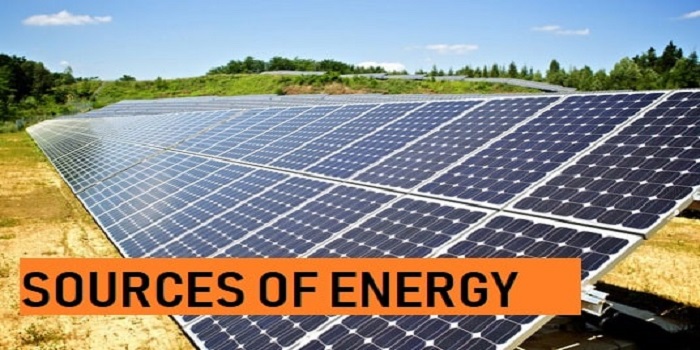In this article, we are going to discuss one of the most important chapters of CBSE syllabus: Sources of Energy Class 10.
Energy comes in different forms & it can be converted from one form to another. It is impossible to create Energy and unfeasible to destroy it. Mankind has developed a lot of things with time. Similarly, Energy can be generated too. there are a lot of sources of energy. They all have their owns pros and cons. Either way, energy is important and useful almost everywhere.
A Source of Energy is one which provides an adequate amount of energy in a convenient form over a long period of time so that humankind can stay reliable on that until other sources are found.
NOTES FOR SOURCES OF ENERGY CLASS 10
The need of Energy:
- For making Food
- For lightening transport
- For running machines
- For industrial & agricultural activities
Qualities of a good source of energy:-
- It does a large amount of work per unit mass.
- It is cheap and is easily available.
- It is easy to store & transport.
- It is safe to use & handle.
- It does not cause Environmental Pollution.
SOURCES OF ENERGY:-
- Conventional Source– Conventional Energy sources are those who can provide energy regardless of the weather conditions. These are the traditional sources of energy. These are a non-renewable source of energy. Conventional Energy Sources are finite. Example of Conventional Sources is- fossil fuels and biomass etc.
Fossil fuels
Fossil fuels take millions of years to form and are available in a very limited amount. Fossil Fuels are formed by natural resources such as anaerobic decomposition of buried dead organisms. Fossil fuels are of great importance because they can be burned and then produces a significant amount of Energy. Different types of Fossil Fuels are Coal, Petroleum & Natural Gas. These are non-renewable sources of energy.

Pollution caused by Fossil Fuels:-
- The released oxide of Carbon, Nitrogen & Sulphur (acidic in nature) causes Acid Rain which damages the plants & reduces the fertility of the soil.
- They produce a large amount of CO2 in the atmosphere, which in turn causes the greenhouse effect leading to excessive heating of the Earth.
Thermal Power Plant
A Thermal Power Plant converts the heat energy of coal into electrical energy. Thermal Power Plants contribute maximum to the generation of Power in any Country. In Thermal generating Stations; coal, oil & Natural Gas etc. are employed as the primary source of energy.
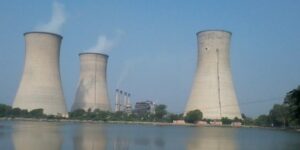
Advantages of Thermal Power Plant:-
- The fuel used is quite cheap.
- Less initial cost as compared to other generating stations.
- It can be installed at any place irrespective of the existence of coal. The coal can be transported to the site of the plant by rail or roads.
Disadvantages of Thermal Power Plant:-
- It pollutes the atmosphere due to producing a large amount of smokes and fumes.
- Higher maintenance cost and operational cost.
Hydro Power Plants
In Hydro Power Plant, the water is utilized to move the turbines, which in turn run the Electric Generators. The potential energy stored in the dam gets converted into Kinetic Energy of the moving water. This Kinetic Energy gets converted into the Electrical Energy with the help of Turbine & Generator.
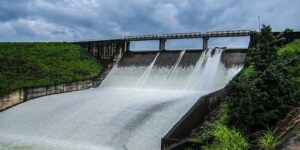
Advantages of Hydro Power Plant:-
- No fuel Charges
- Running cost of the Plant is low
- No fuel transportation is required
Disadvantages of Hydro Power Plant:-
- The initial cost of initiating the plant is very high.
- Takes a long time for Construction of Dam.
- Power Generation by the hydropower plant is only dependent on the natural phenomenon of rain. Therefore at the time of drought or summer season, the hydropower plant will not work.
Improvements in Technology for using Conventional Source of Energy
As we know that Conventional Source of energy has proved to be beneficial, that’s why there are some improvements in the technology of Conventional Sources.
Bio-Mass
Bio-mass is organic matter produced by plants. Both terrestrial, aquatic and their derivatives. It is a sustainable fuel that can deliver a significant reduction in net carbon emissions when compared with fossil fuels. Biomass includes organic matter like grass, leaves, wood, wood chips, rice husk, sewage etc.

A biogas plant is an airtight container that facilitates fermentation of material under anaerobic conditions. Biomass is used for producing Biogas in a biogas plant.
Advantages of Biogas:-
- Biogas is ecofriendly
- Provides employment by the power plant
- Biogas generation produces organic fertilizers
- It is simple and low-cost technology
- It reduces the greenhouse effect
Disadvantages of Biogas:-
- Biogas is not attractive in large scale
- Few technology developments
- Contains impurity
- Less suitable for dense metropolitan
Utilization of Biogas:-
- Cooking
- Lighting
- Operating small engine
- For pumping water
Wind Energy
Wind energy describes the process by which wind is used to generate electricity. It is a form of Solar Energy. Windmills convert the kinetic energy in the wind into mechanical power. Three key factors that affect the amount of energy a windmill can harness from the wind are wind speed, air density, and swept area. Wind Power generation capacity in India has significantly increased in recent years.

Advantages of Wind Energy:-
- The wind is reliable and infinitely renewable energy resource.
- Wind energy is cost-effective, and prices are dropping still.
- Wind energy reduces carbon emissions when used instead of fossil fuels.
Disadvantages of Wind Energy:-
- Wind Energy can be unpredictable as the amount of electricity generated is dependent on the speed and direction of the wind.
- Windmills can affect the habitat of birds.
- Wind farms can be expensive to construct.
- The wind farm can affect the visual appearance of the landscape.
- Non-Conventional Source- Non-Conventional Energy Sources are those energy sources which are renewable and ecologically safe. These Sources of Energy are abundant in nature. These energy sources can be renewed with minimum effort and money. They are also pollution-free and eco-friendly. Example of Non-Conventional Energy Sources are- Solar Energy, Tidal Energy & Nuclear Energy etc.
Solar Energy
Solar energy is the energy received by the Earth from the Sun. this energy is in the form of solar radiation, which makes the production of Solar Electricity possible.
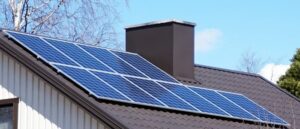
Working of a Solar Panel
A solar panel is placed outside at the place where Sunlight is present in abundance. Sunlight hits the Solar panel and is absorbed by semiconducting materials such as silicone. Electrons are knocked loose from their atoms, which allow them to flow through the material to produce electricity. This process is called the photovoltaic (PV) effect. An array of solar panels converts solar energy into Direct current electricity.
Uses of Solar Energy-
- Heat your Swimming pool with Solar Energy.
- Solar Energy can heat your water.
- Solar energy can be used for charging the battery.
- Power your home with solar energy.
- Solar energy is used for cooking.
- Solar energy is used for Indoor lightening.
- Solar energy is used for outside lightening
Advantages of Solar Energy:-
- The energy from the Sun is practically free after the initial investment has been recovered.
- Solar energy is clean, renewable, sustainable and helps in protecting our environment.
- It does not pollute the air.
- Solar Energy does not contribute to global warming, acid rain or smog. It contributes to the decrease in harmful greenhouse gas emissions.
- The solar energy system is virtually maintenance-free and will last for decades.
Disadvantages of Solar Energy:-
- The semi-conducting material used in making a Solar Panel are of the high cost.
- The cost of solar energy is also high as compared to non-renewable utility-supplied electricity.
- The solar panel requires a large area for installation to achieve a good level of efficiency.
- The efficiency of the system also relies on the location of the sun.
Tidal Energy
Tidal energy is the utilization of the variations in sea level caused by the rotation of Earth. Tidal energy converts the energy of tides into the useful form of power, mainly in electricity.

Uses of Tidal Energy-
- Tidal Electricity- the main usage of tidal energy is in the generation of electricity.
- Grain mills- tidal energy is used for the mechanical crushing of grains in grain mills.
- Energy Storage- tidal energy can be used as a store of energy. For energy storage, Tidal Barrages with their reservoirs can be modified to store energy.
Advantages of Tidal Energy:-
- It is an inexhaustible source of energy.
- It is environment-friendly energy and does not produce greenhouse gases. Rise and fall of tides can be easily predicted.
- The efficiency of tidal power is far greater as compared to coal, solar or wind energy.
- The maintenance cost of tidal power is low.
Disadvantages of Tidal Energy:-
- Cost of construction of Tidal Power Plant is high.
- A tidal power plant can only be localized in coastal regions only.
- It influences aquatic life adversely.
Wave Energy
When the wind flows across the sea surface, waves are generated by the winds. Wave energy is often confused with Tidal Energy, but it is quite different.

Advantages of Wind Energy:-
- It is renewable, and it can never run out. Waves are always moving.
- Waves create no harmful byproducts such as gas, waste and pollution.
- Wave energy is absolutely free, as there are no fuels used.
- It is inexpensive and easy to operate.
Disadvantages of Wind Energy:-
- Only the people residing near Power plant can have benefited from this.
- It is harmful to marine animals.
- Generation of energy totally depends on the waves.
Ocean Thermal Energy
It is a process that can produce electricity by using the temperature difference between deep cold ocean water and warm tropical surface water. It is a renewable energy technology that converts solar radiation into electrical power by Oceans.
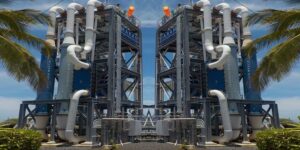
Advantages of Ocean Thermal Energy Conversion-
- It helps in producing fuels like Hydrogen ammonia and methanol.
- It provides air conditioning for buildings.
- It provides moderate-temperature refrigeration.
Disadvantages of Ocean Thermal Energy Conversion-
- It is costlier than the electricity produced by fossil fuels.
- Construction of OTEC Plant affects commercial fishing.
- There are many risks associated with OTEC plant such as electrical hazards , heavy equipment etc.
Geothermal Energy
It is thermal energy that is stored in the Earth. The heat energy can be brought to the earth surface by Geysers or Geothermal heat pump.
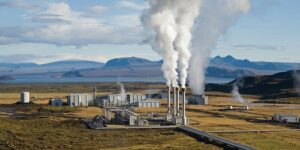
Uses of Geothermal Energy-
- It is used in Hot Springs.
- It can be helpful in generating heating water at fish farms.
- It provides heat for industrial processes.
Advantages of geothermal energy-
- Geothermal is a sustainable resource.
- It does not involve the combustion of fuel.
- It is a clean resource. It doesn’t cause environmental degradation.
- It is always available.
Disadvantages of Geothermal Energy-
- It involves a high installation cost.
- Its transportation is impossible.
- It can cause earthquakes.
Nuclear Energy
Nuclear energy is generated with the help of a process called Nuclear Fission. Splitting of a heavy nucleus into two lighter nuclei with a simultaneous release of a huge amount of energy is called Nuclear Fission. A nuclear reactor produces and controls the release of energy.

1 atomic mass unit (u) is equivalent to about 931 mega electron volts (MeV) of energy.
Nuclear energy constitutes 3% of total electricity production in India whereas it is upto 30% in industrialised countries.
Advantages of Nuclear Power-
- It is a rich energy source.
- Nuclear Power reactor run for a long time.
- It causes no air pollution.
Disadvantages of Nuclear Power-
- It produces radioactive wastes.
- Nuclear power plants are very expensive to build.
- There are huge safety concerns in a Nuclear Power Plant.
- Ethical use of nuclear power plants is still a debate.
A safer way to produce nuclear energy is nuclear fusion wherein two lighter nuclei are joined to form a heavy nucleus. However, it requires extreme conditions like millions of degrees of temperature and millions of Pascals of temperature.
for more info about Sources of Energy Class 10, read: Sources of Energy
ENVIRONMENTAL CONSEQUENCES
Though it looks like a clean fuel, there are many environmental concerns such as
- ease of extraction
- assembly of the device.
HOW LONG WILL AN ENERGY SOURCE the LAST US?
- Sources like coal and firewood can’t be replaced, but biomass, if used wisely, can last for a very long time.
- The energy sources that can be regenerated are called renewable resources.
Conclusion:
Most of the Energy Sources derive their Energy from the Sun. Humankind must lookout for alternative Energy Sources as the conventional sources are getting exhausted at a faster rate.
